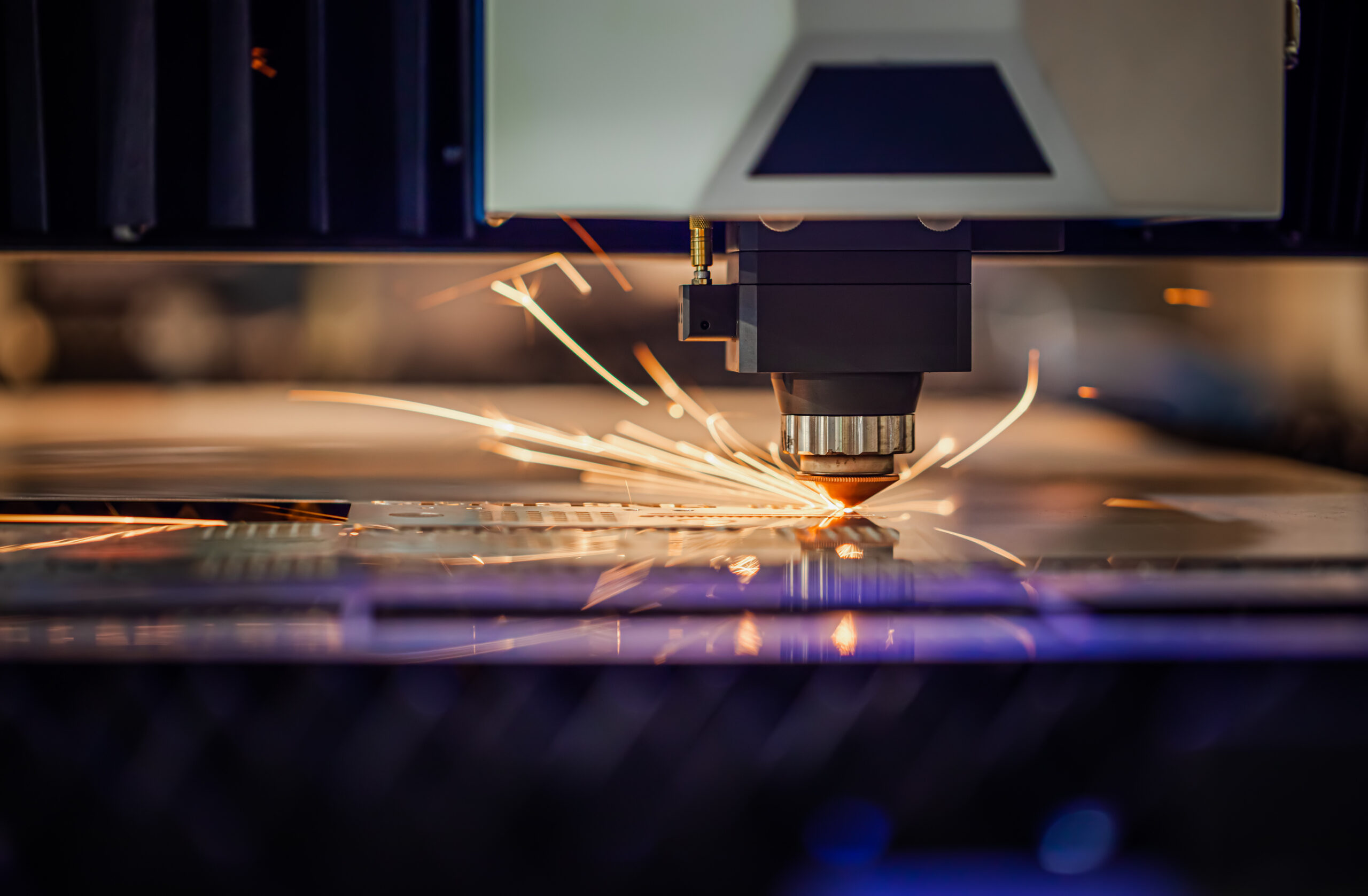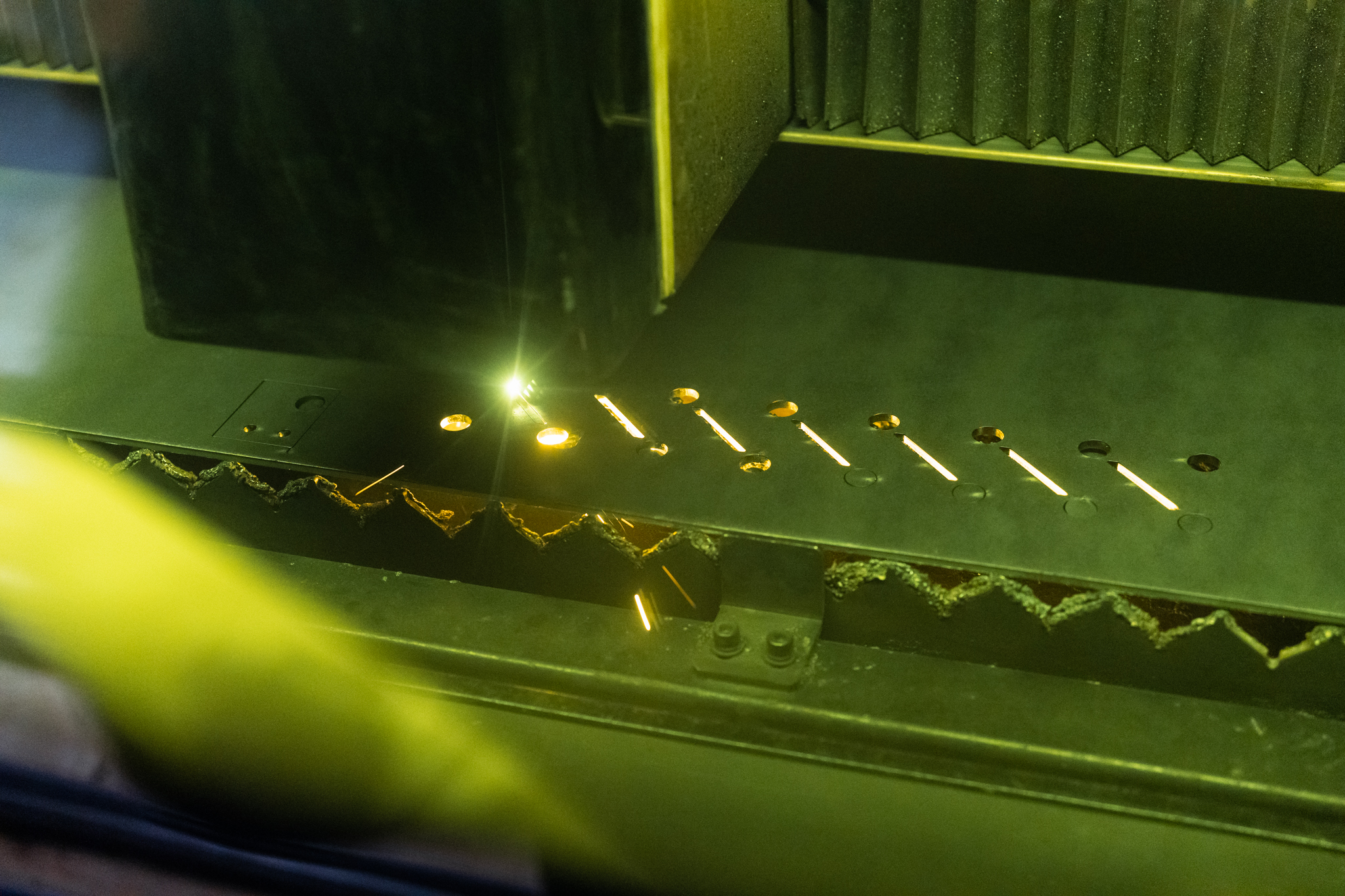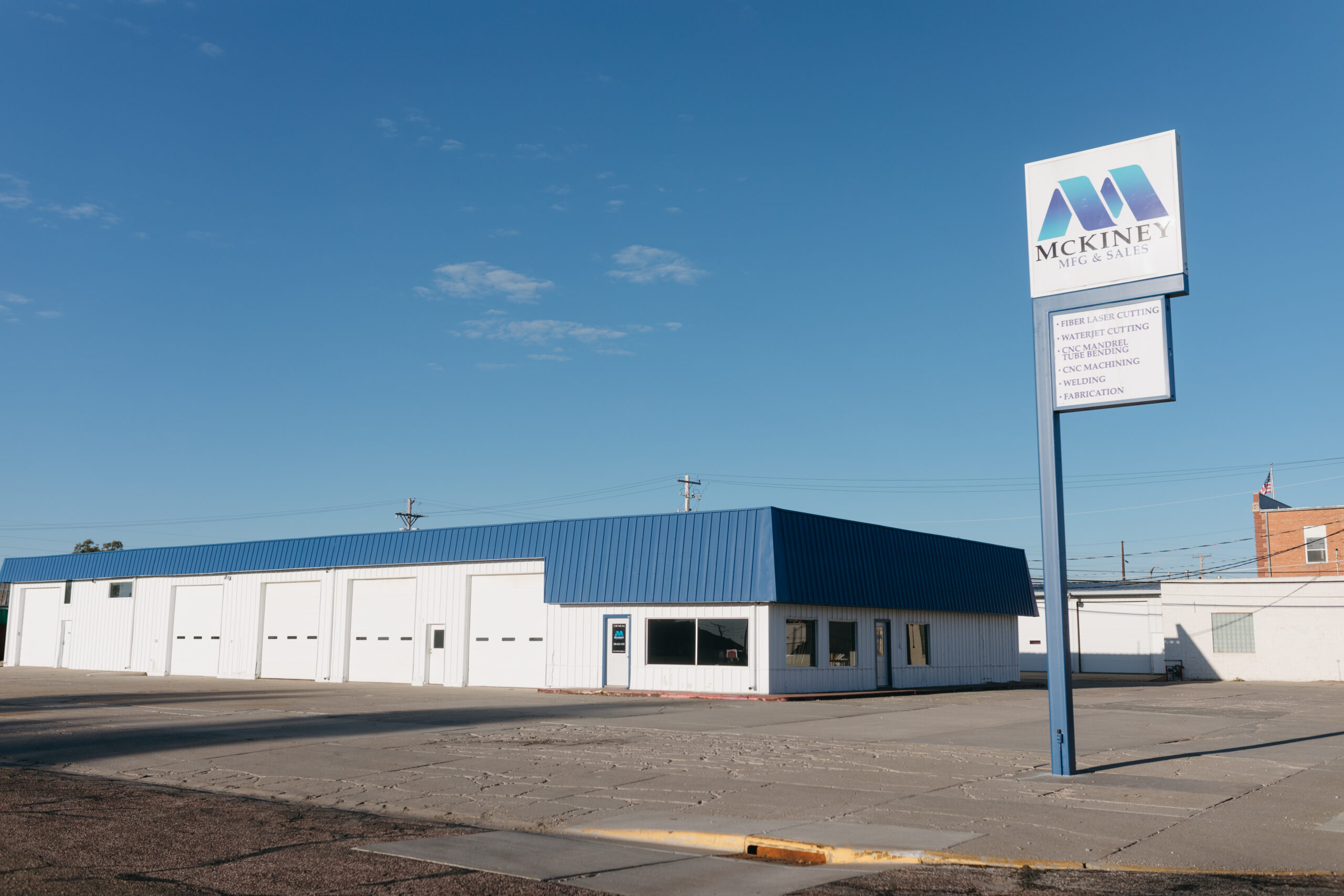The demand for precision and efficiency in sheet metal processing has never been higher in today’s manufacturing world. As businesses seek to streamline their operations and meet increasingly stringent quality standards, the choice of cutting method plays a pivotal role in achieving these goals.
In this blog post, we cover:
- The Benefits of Fiber Laser Cutting
- How CNC Fiber Laser Cutting Works
- Fiber Laser Cutting vs. CO2 Laser Cutting
- Fiber Laser Cutting vs. Plasma Cutting
- Fiber Laser Cutting vs. Mechanical Cutting
- Fiber Laser Cutting vs. Waterjet Cutting
What are the benefits of fiber laser cutting?
High-Speed, Efficient Cutting
When determining a cutting application for your project, speed and a fast turnaround are some of the most sought-after qualities. Fiber lasers are known for their exceptional speed, making them ideal for quick, efficient sheet metal processing. The speed of a specific cutting job depends on the material used, the thickness of that material, and the complexity of your design, but fiber lasers can complete jobs in a fraction of the time compared to traditional methods like mechanical cutting or plasma cutting. Compared to CO2 laser cutters, the fiber laser cutter can yield three to four times greater throughput, because of the use of significantly less energy and no “warm-up” before use.
Precision Cutting
When working with sheet metal, precision is crucial to ensure accurate dimensions and clean edges. Because of their sophisticated CNC (Computer Numerical Control) systems, fiber lasers excel in providing high-precision, no-contact cuts, allowing for both intricate designs and tighter tolerances compared to other cutting methods. These control systems use advanced algorithms to optimize cutting paths, minimize processing time, and ensure consistent performance across different materials and thicknesses. This precision is essential for the automotive and aerospace industries and many others where the components have complex geometries.
Versatility
Sheet metal comes in various thicknesses and materials like steel, aluminum, copper, and stainless steel. Fiber lasers are highly versatile and are compatible with these and more materials. Fiber lasers also support other processing methods besides traditional cutting, like engraving, marking, and surface texturing. This makes the CNC fiber laser incredibly advantageous in terms of scalability.
Minimal Heat Affected Zone (HAZ)
Due to their advanced laser technology, high speeds, and precise control mechanisms, fiber lasers are capable of producing only a minimal heat-affected zone during cutting compared to other methods like plasma cutting, minimizing distortion and ensuring the integrity of your sheet metal. This is particularly advantageous when working with thin materials or intricate designs where heat distortion would compromise the quality of the finished product.
Less Material Waste
Fiber lasers optimize nesting in the cutting process, resulting in the least possible material waste. Their high precision and nesting capabilities allow for efficient use of sheet metal and reduction of scrap material. This is important for cost-conscious production and maximizing your return on investment.
Repeatability & Ease of Integration
Once a cutting program is established and optimized, it can be replicated accurately and consistently, ensuring precise results with every production run. This level of repeatability not only reduces scrap and rework but also enhances overall quality and productivity. The fiber laser’s compatibility with automation technologies also makes it suitable for high-volume production environments.
Learn More About Fiber Laser Cutting
How CNC Fiber Laser Cutting Works
Fiber laser cutting uses Computer Numerical Control (CNC) technology to direct a high-power laser which vaporizes materials and leaves behind a cut edge.
Fiber laser cutters are highly accurate, seamlessly vaporizing through the material by means of a small, direct, high-powered laser for a clean cut each time. Our CNC laser cutting machine is equipped with CAD software so that we can follow your specifications down to the smallest detail. Because it’s automated, laser cutting is an easy, safe, and accurate cutting method compared to others.
Our 12 kW fiber laser cutter offers high-speed efficiency with consistent cutting quality on varied material types up to 1.250” and carbon steel up to 1.500”.
Our machine also is capable of custom fiber laser engraving for stainless steel, copper, brass, and other materials.
Fiber Laser Cutting vs. CO2 Laser Cutting
Fiber lasers have the advantage of being faster than CO2 lasers while cutting thinner materials and also being better suited to cut reflective metals like aluminum, copper, brass, or steel. While both of these cutting methods operate in the same basic way, they differ on efficiency, material compatibility, and costs. We discuss their unique advantages and disadvantages in our blog post on Fiber Lasers vs. CO2 Lasers.
Fiber Laser Cutting vs. Plasma Cutting
Plasma cutting, a potentially cheaper cutting alternative, is great for cutting thicker materials and may be more cost-effective for low-precision cutting applications where edge quality is less important. Like fiber laser cutters, plasma cutters also flexibility in terms of material compatibility with conductive metals like mild steel, stainless steel, and aluminum.
Laser cutting, on the other hand, offers higher precision and versatility, smaller heat-affected zones, and is more suitable for intricate designs with clean, high-quality cuts. The fiber laser’s fast cutting speeds and efficient operation also make it better-suited for high-volume production environments.
Fiber Laser Cutting vs. Mechanical Cutting
The fiber laser is known for its ability to quickly produce intricate cuts with tight tolerances—making it ideal for the automotive, aerospace, and electronics industries, where complex components and high-volume production runs are common. Fiber lasers offer superior efficiency and throughput compared to mechanical cutting methods, making them much better suited for high-volume production environments. Additionally, the minimal heat-affected zone (HAZ) produced by fiber lasers preserves the material integrity and reduces the need for post-processing done after mechanical cutting.
Mechanical cutting methods, like sawing or shearing, may be preferred for cutting certain materials, such as wood or thick metals, where fiber lasers may not offer significant advantages. Mechanical cutting requires more labor and time, but is much more cost-effective for low-volume production or one-off projects. However, mechanical cutting typically lacks the precision and speed of fiber lasers, and is not suitable for complex parts or applications requiring high accuracy and throughput.
Fiber Laser Cutting vs. Waterjet Cutting
Fiber laser cutting excels in applications requiring high precision, speed, and high throughput, able to generally provide higher throughput than the waterjet can.
Conversely, waterjet cutting offers broader material compatibility with non-metallic materials such as composites, plastics, glass, and more. It is also more effective for cutting very thick materials (greater than .9 inches or 25 mm). Since waterjet cutting is a cold-cutting process, it produces no heat-affected zone (HAZ) and thus has the advantage when cutting materials that are heat-sensitive.
Learn More About Waterjet Cutting

Fiber Laser Cutting Capabilities
Fiber laser cutters are highly versatile and efficient machines capable of precision cutting with unmatched flexibility and quality. This makes them compatible with a wide range of materials in sheet or tube form, including:
- Stainless Steel
- Copper
- Aluminum
- Carbon Steel
- Brass
- Alloy Steel
- & more
Their high-speed operation and advanced CNC systems make them ideal for high-volume production, where efficiency and precision are most important.
How Thick of Metal Can A Fiber Laser Cut?
Over the past few decades, advancements in technology have greatly expanded fiber lasers’ cutting capabilities and advancements continue to be made in this regard. Overall, the thickness of metal a fiber laser can cut depends on its laser power (kW), the type of metal you’re cutting, and the specific characteristics of the fiber laser cutting machine, such as its beam quality or cutting speed.
Fiber lasers can cut everything from thin sheets to thicker plates. For thin metals (less than 0.236 inches or 6 mm), they offer very precise cuts with minimal heat impact. In medium thickness (0.236 inches to .984 inches or 6 mm to 25 mm), they remain effective for materials like mild steel and aluminum. While not as common for very thick metals, with high laser power and specialized setups, they can handle up to 1.2 inches (30 mm) thick or more.
At McKiney Manufacturing, our 12kW fiber laser offers high-speed efficiency with consistent cutting quality on varied material types up to 1.250” (31.75mm) and carbon steel up to 1.500” (38.1mm).
Fiber Laser Cutting Services For Manufacturers in Nebraska, Colorado, Wyoming, & Nationwide
McKiney Manufacturing is located in Mitchell, Nebraska, providing a range of manufacturing services since 1974. Our mission is to exceed our customers’ expectations by being a continuous resource to their business, providing top quality products and offering exceptional customer service. By forming long-term partnerships with our clients, we offer stable and scalable manufacturing solutions and focus on continued profitable growth.
This allows us to be proactive on behalf of our clients to complete consistent high-volume orders and meet their large-scale production needs with fiber laser cutting, waterjet cutting, tube cutting and bending, fabrication, and more. While we are located in Western Nebraska, we are able to manufacture products for businesses in Colorado, Wyoming, the Front Range, and throughout the United States.
Grow your business today with our full range of cutting-edge manufacturing services.


